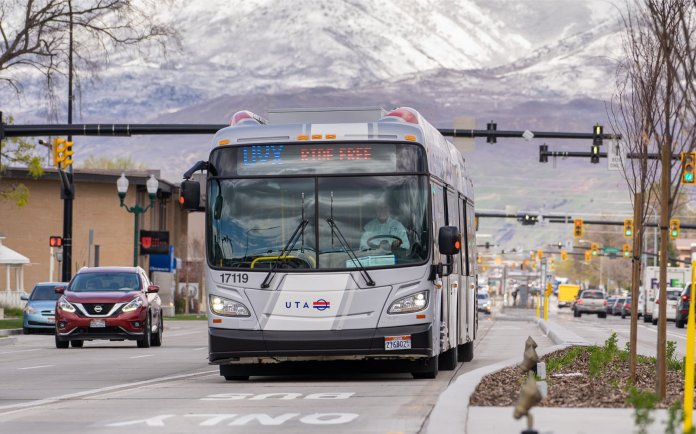
“It is not hard to understand that the producing and consuming of automobiles might properly seem the purpose of life to the General Motors management, or that it might seem so to other men and women deeply committed economically or emotionally to this pursuit… It is harder to understand, however, why the production and consumption of automobiles should be the purpose of life for this country.”
– Jane Jacobs, The Death and Life of Great American Cities
Nicholasville Road is probably Lexington’s most infuriating road to drive on. Outside of the liminal emptiness of the middle of the night, the road has bumper-to-bumper traffic for miles. Personally, I will always avoid driving it whenever possible. The last time I found myself there was when I decided to give it another shot a few months ago after avoiding it a while, but when I was stopped in traffic where Upper and Limestone split, someone hit me from behind and totaled my car. Never again.
It comes as no surprise, then, that Lexington’s urban planners want to redesign the road. In 2023, the city of Lexington published a study that seeks to reimagine the road, making it more efficient and safer for not only drivers, but also the many pedestrians and bicycle users who use the road. Because much of Nicholasville Road is owned by the Commonwealth (as US 27), Kentucky’s Transportation Cabinet (KYTC) is currently preparing its own study to make its own recommendations. As an intern for KYTC, I was able to attend a recent meeting to discuss this project. It is obvious that something has to be done to this road, especially now that UK is planning to build a new cancer center nearby, and private student housing complexes are planned along Nicholasville Road.
Adding more lanes, the usual solution to this type of situation, is completely out of the question. Many previous expansions have left buildings so close to the road that there is simply no room to add another one. Even if Lexington wanted to go through the process to buy these buildings and demolish them to make room, many of them have historical preservation laws protecting them to avoid this. As a result, the planners are looking for other methods to alleviate traffic and make the road safer. Besides, adding extra lanes to a highway does not work once you already have a road as wide as Nicholasville Road, being ridiculously expensive for a project that often only leads to marginal traffic improvements.
One of the proposals that planners in both Lexington and Frankfort are considering that I am most interested in is a potential BRT route on Nicholasville Road, the first such route in the city. BRT, short for Bus Rapid Transit, is a bus service that attempts to emulate features of light rail transportation (the modern term for street cars or trams). This usually involves fare payment at the stops rather than on the bus, buses running more often than traditional bus routes, dedicated lanes for BRT buses only, among others.
If BRT lines behave similarly to trains, then why not just use trains? Many cities, like Cincinnati, Detroit, and Phoenix, use a light rail system. As much as I love light rail (if the Cincinnati Connector has zero fans, then I’m dead), it can be quite costly and requires a lot of infrastructure and maintenance that many mid-sized cities do not have the money, time, or public interest to take on. BRT is much cheaper in comparison and much easier to construct and implement. Instead of having to lay track, you might just paint the road. BRT systems can also be used as a proof of concept for future light rail networks, although in my conversations with planners around Lexington, that doesn’t seem to be the case here, at least for now.
Although BRT is not a new concept, the first line being created in the 1970s, it has only really taken off in the United States within the last decade. If the BRT is implemented, we wouldn’t be the first in the area. Louisville has a BRT line, serving the western half of the city from downtown, along the Dixie Highway, ending just before the intersection of Dixie and Gene Snyder. The list of stops and schedule was once available on TARC (Louisville’s transit authority), but as of March 2025, the link is broken. Cincinnati is also preparing to introduce BRT to the city, with two routes by the end of next year. Both routes originate downtown, where they run concurrently, then split off in Clifton (near the University of Cincinnati campus), with one going towards the northeast of town and the other towards the northwest.
The exact details are still up in the air, and are subject to change in any step of the design process, which could take several years, but the line would most likely start in downtown, stopping at several important intersections along Nicholasville Road, eventually terminating at Man O’ War or even out to Brannon Crossing in the northern end of Jessamine County. It would likely take about as long as driving down the road, with some minor time loss for stopping and boarding, but the dedicated lane could prove helpful during rush hour, and make the bus more enticing if you’re stuck. At certain points, especially in the more suburban areas of the route, there would likely be park-and-ride lots next to the stops.
Seasonal stops might also be implemented in front of Kroger Field, to be used before and after games.
Is the BRT line going to help with traffic on Nicholasville Road? I’m hopeful it will have some effect, but I’m not going to delude myself into thinking that it will solve the traffic problem completely. Honestly, nothing could really help that trainwreck of a road unless a lot of other people realize that there are multiple other roads that will get you where you need to go in about the same time. Research has shown that increased use of public transportation does reduce traffic congestion, so making this plan work will involve convincing people to use it. As I mentioned earlier, resilience against rush hour traffic could potentially be a selling point. The park and ride lots at some stops would also make travelling to multiple destinations along Nicholasville Road more worthwhile, considering the amount of time that could be saved by not having to search for parking at each stop.
Even if it doesn’t help traffic all that much, I believe that the BRT route, with other proposals in the full study, would help make Nicholasville Road less daunting for those who dare to traverse it by bike or on foot.
Side note: If you haven’t already, you should totally subscribe to Civic Lex, a free weekly newsletter explaining whatever Lexington’s government is up to.


